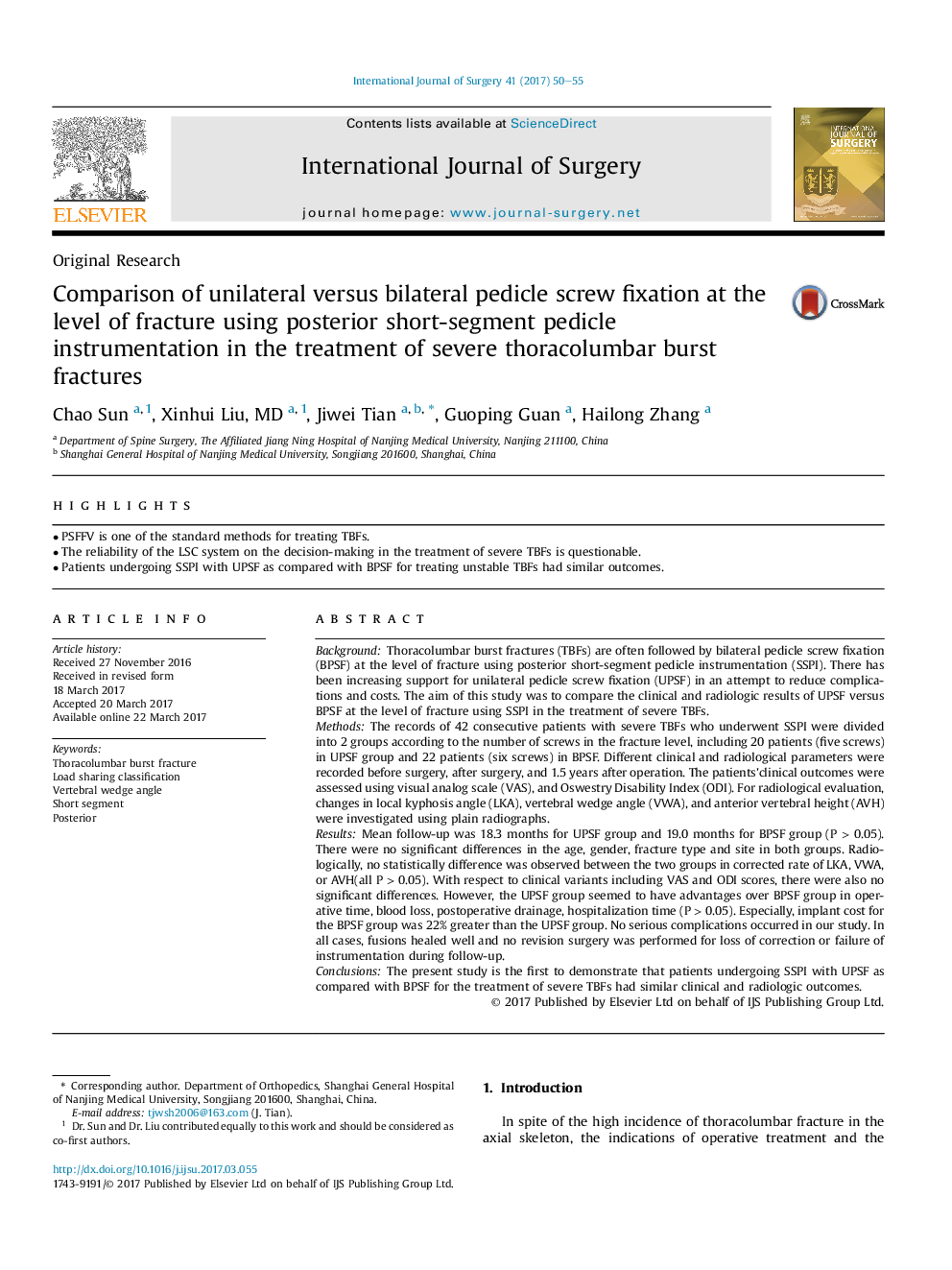| Article ID | Journal | Published Year | Pages | File Type |
|---|---|---|---|---|
| 5731776 | International Journal of Surgery | 2017 | 6 Pages |
â¢PSFFV is one of the standard methods for treating TBFs.â¢The reliability of the LSC system on the decision-making in the treatment of severe TBFs is questionable.â¢Patients undergoing SSPI with UPSF as compared with BPSF for treating unstable TBFs had similar outcomes.
BackgroundThoracolumbar burst fractures (TBFs) are often followed by bilateral pedicle screw fixation (BPSF) at the level of fracture using posterior short-segment pedicle instrumentation (SSPI). There has been increasing support for unilateral pedicle screw fixation (UPSF) in an attempt to reduce complications and costs. The aim of this study was to compare the clinical and radiologic results of UPSF versus BPSF at the level of fracture using SSPI in the treatment of severe TBFs.MethodsThe records of 42 consecutive patients with severe TBFs who underwent SSPI were divided into 2 groups according to the number of screws in the fracture level, including 20 patients (five screws) in UPSF group and 22 patients (six screws) in BPSF. Different clinical and radiological parameters were recorded before surgery, after surgery, and 1.5 years after operation. The patients'clinical outcomes were assessed using visual analog scale (VAS), and Oswestry Disability Index (ODI). For radiological evaluation, changes in local kyphosis angle (LKA), vertebral wedge angle (VWA), and anterior vertebral height (AVH) were investigated using plain radiographs.ResultsMean follow-up was 18.3 months for UPSF group and 19.0 months for BPSF group (PÂ >Â 0.05). There were no significant differences in the age, gender, fracture type and site in both groups. Radiologically, no statistically difference was observed between the two groups in corrected rate of LKA, VWA, or AVH(all PÂ >Â 0.05). With respect to clinical variants including VAS and ODI scores, there were also no significant differences. However, the UPSF group seemed to have advantages over BPSF group in operative time, blood loss, postoperative drainage, hospitalization time (PÂ >Â 0.05). Especially, implant cost for the BPSF group was 22% greater than the UPSF group. No serious complications occurred in our study. In all cases, fusions healed well and no revision surgery was performed for loss of correction or failure of instrumentation during follow-up.ConclusionsThe present study is the first to demonstrate that patients undergoing SSPI with UPSF as compared with BPSF for the treatment of severe TBFs had similar clinical and radiologic outcomes.
